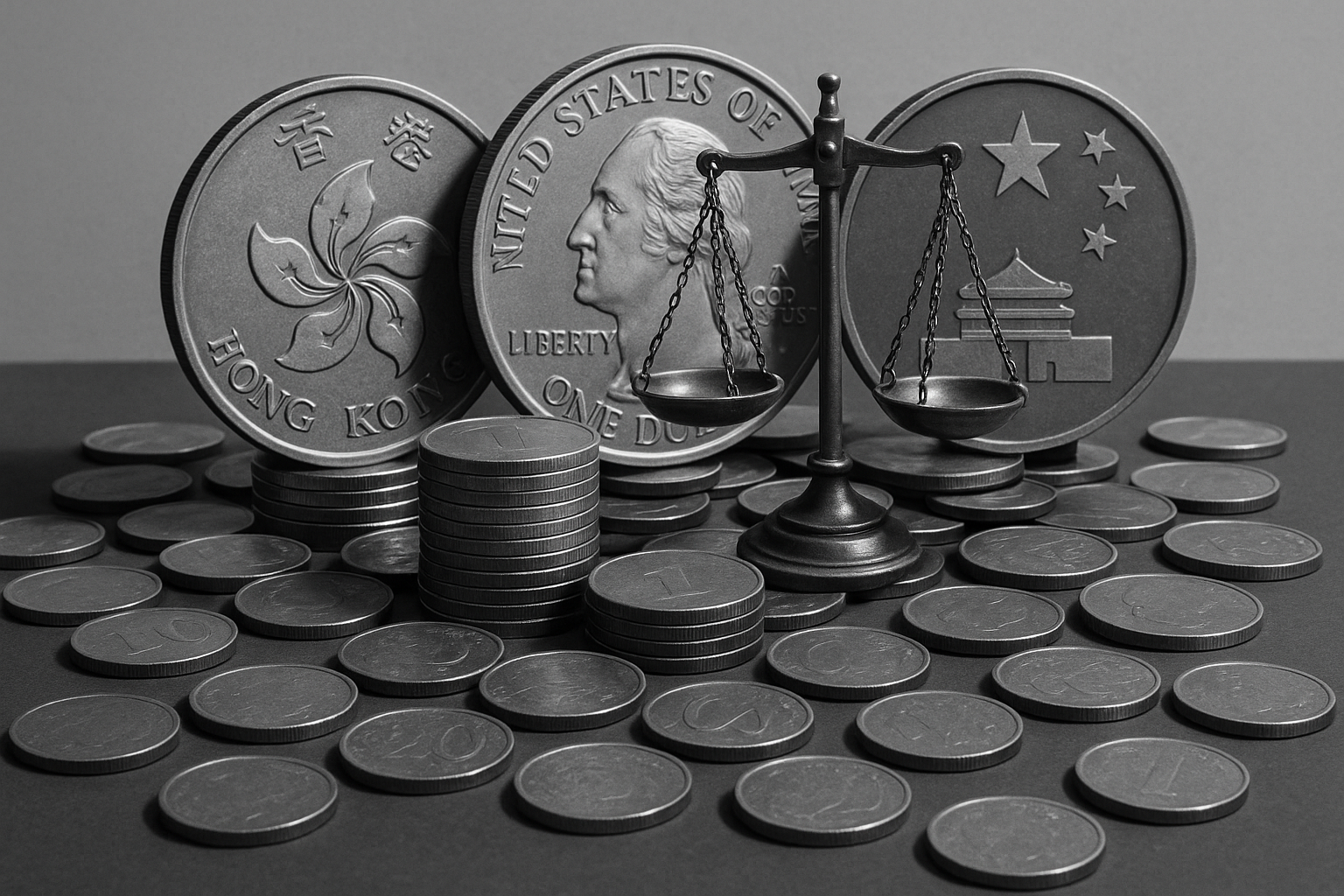Back in 2009, when Satoshi first posted the Bitcoin whitepaper on an obscure cypherpunk mailing list, Hong Kong was busy nursing its post-Lehman wounds. The city had already survived the 1997 handover and the 2003 SARS crash, yet its identity as a mega-gateway for global capital never really changed. Fast-forward to 2024, and we’re staring at another pivot point: brand-new Hong Kong stablecoin laws take effect this August, and—no surprise—the community is split right down the middle.
Here's What Actually Happened
• The Hong Kong Monetary Authority (HKMA) got final approval to roll out a licensing regime for fiat-backed stablecoins.
• Companies issuing or even marketing a stablecoin to HK residents will need a local license, minimum paid-up capital of HK$25 million (≈US$3.2 M), and real-time 1:1 reserves in—you guessed it—Hong Kong dollars or yuan.
• Go-live date: August 1, 2024. Non-compliant projects face fines up to HK$5 million and prison time (yep, actual bars).
Officially, regulators say the move will “promote fintech while safeguarding investors.” Unofficially, most of us read between the lines: this is Beijing-flavored de-dollarization leaking into crypto.
Why the Community Can’t Shut Up About Dollar Dominance
I’ve noticed two camps forming on Crypto Twitter (sorry, I still can’t call it X without cringing):
@DimSumDeFi: “Hong Kong is playing 4D chess. Force local issuance in HKD/CNY, starve USDC of network effects in Asia.”
@AnxiousApeYacht: “Sure, but good luck spinning up liquidity. Tether prints more in a week than all HK dollars in existence.”
They both have a point. Tether’s USDT currently accounts for roughly 69% of global stablecoin cap (~US$111 B) while HKD stablecoins barely register on CoinGecko. The new regime practically invites small, nimble startups to issue HKD-backed coins but simultaneously deters bigger U.S. players—Circle, Paxos, even PayPal’s PYUSD—because none of them want to retool reserve policies for a sub-8-million-persons market.
Connecting the Dots to 2023’s BRICS Headlines
This isn’t happening in a vacuum. Last August, BRICS countries (Brazil, Russia, India, China, South Africa) openly floated the idea of a shared settlement currency to dodge the dollar. Hong Kong aligning its fintech playbook with that vibe feels less like coincidence and more like choreography. If mainland China can’t directly ban USDC globally, nudging its special administrative offspring to champion HKD-pegged coins is the next best thing.
‘Wait, Isn’t Hong Kong Supposed to Be Crypto-Friendly?’
Yep, that’s what had a lot of us cheering when the city opened retail trading licenses for Bitcoin and Ether earlier this year. But friendliness doesn’t always mean laissez-faire. The HKMA basically said, “You can play in our sandbox, just use our sand.”
In my experience running node infrastructure for a few mid-cap DeFi projects, capital moves where liquidity is thickest. If Asia-based traders can’t easily on-ramp USDT or USDC under the new rules, will they switch to HKD-backed coins? Maybe. But incentives matter. Liquidity mining rewards, cross-chain support via bridges like Wormhole or LayerZero, and fiat off-ramps on Binance or OKX will dictate adoption—not legal memos.
A Quick Tangent: K-Pop, Memecoins, and Cultural Gravity
Remember when South Korea’s memecoin mania pumped SSB (Seoul Star Ball) 400% because a K-pop idol tweeted a cat emoji? Culture pulls harder than policy. If Hong Kong regulators want local stablecoins to thrive, they’ll need the same narrative juice. Imagine a Hong Kong-film-studio-backed NFT drop where royalties auto-stream in HKD-coins—now we’re talking actual traction. Otherwise, traders will keep defaulting to USDT because their favorite Bybit perpetuals settle in dollars. Just my two Hong Kong cents.
Why This Matters for Your Portfolio
• Liquidity re-pricing: DeFi protocols like Aave v3 and Curve pools could spin up HKD stables, fracturing global liquidity slabs.
• Reg-arbitrage alpha: Smaller issuers (think TrustToken or Frax) may jump in early, grabbing Asian market share while Tether/Circle watch from the sidelines.
• CEX strategy shift: Binance already supports HKD trading pairs; expect them to sweeten yields for HKD stablecoins to prime the pump.
• FX risk: The HKD is quasi-pegged to the USD (7.75-7.85). If that peg breaks—unlikely but not impossible—you’ve got extra basis risk compared to plain-vanilla USDC.
• Compliance headaches: Even marketing a USDC Telegram sticker pack in Hong Kong could technically count as “promotion.” That’s some next-level admin overhead.
Community Crystal-Ball Time
Some friends on the ground—shout-out to the Hong Kong Crypto OG Telegram—think the real play is CBDC interoperability. The e-CNY pilot is already live in Shenzhen. Hook that into licensed HKD stablecoins, and cross-border payments between merchants could bypass SWIFT entirely. If you’re looking for clues, follow the infrastructure: UnionPay APIs, AlipayHK wallet upgrades, and any StarkWare or Polygon partnerships announced after midnight Beijing time. That’s usually when the press releases drop.
Stuff I’m Still Scratching My Head About
1. Reserve audits: HKMA says “real-time,” but does that mean chain-link oracles or quarterly PwC PDFs?
2. Algorithmic stables: The rules only mention fiat-backed. Does someone try a Terra-style HKD algo 2.0? (I know, PTSD.)
3. Retail on-ramps: Will HSBC branches actually sell me HKD-coins over the counter like an Octopus card top-up? Sounds wild, but stranger things have happened—looking at you, GameStop rally of 2021.
Okay, So What Do We Do Now?
I’m allocating a small sliver—about 3%—of my stablecoin stack to experimental HKD pairs once they list on DEXs like UniswapX or PancakeSwap (BSC loves Asian trading hours). Nothing life-changing, but enough to stay curious. If you’re a builder, maybe start tinkering with remittance dApps aimed at Filipino OFWs in Hong Kong. They move US$6.6 B in annual remittances; shaving fees with HKD stablecoins could be a killer use case.
Final thought: Every cycle drops a surprise narrative. Last bull run it was dog coins on Solana and AI tokens on Arbitrum. This time? Could be Asia-centric, non-dollar stablecoins. Either way, the next three months will tell us if Hong Kong just wrote a footnote—or the first chapter—of a post-USD crypto era.
See you in the comments. Bring memes, not FUD.



